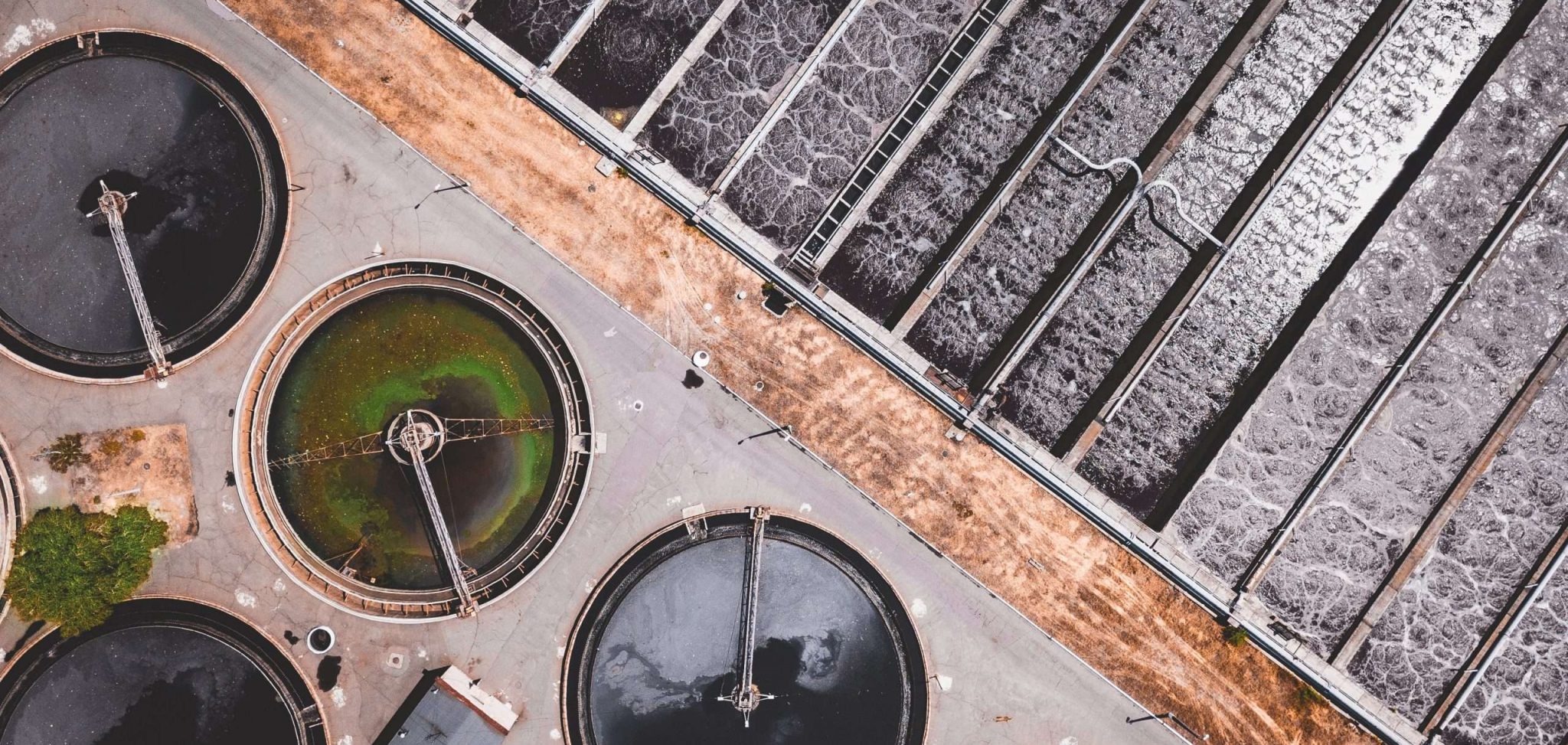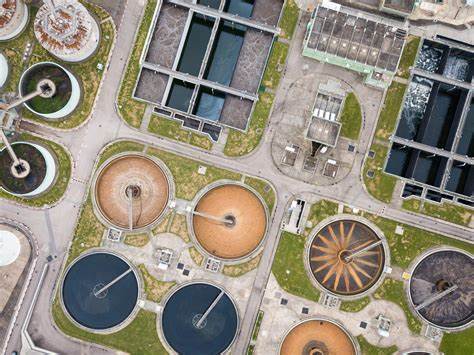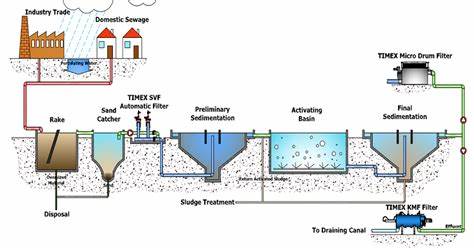
Importance of Reimagining Wastewater Treatment Infrastructure in the 21st Century
Introduction
Wastewater treatment infrastructure plays a crucial role in modern society. It ensures the safe disposal and treatment of waste materials, preventing environmental pollution and protecting public health. However, there is a pressing need to reimagine and update existing wastewater treatment infrastructure to meet the challenges of a rapidly changing world. This article explores the historical background, key concepts, main discussion points, case studies, current trends, challenges, and future outlook of reimagining wastewater treatment infrastructure.
Historical Background
Wastewater treatment has evolved significantly over time. In ancient civilizations, wastewater was often disposed of in rivers or left untreated, leading to widespread diseases and environmental degradation. The industrial revolution brought about centralized wastewater treatment systems, which helped mitigate the pollution caused by rapid urbanization and industrialization. However, these systems have their limitations and struggle to cope with the growing population and increasing pollution levels.
Key Concepts and Definitions
Wastewater treatment refers to the process of removing contaminants from wastewater to make it safe for discharge or reuse. In the context of reimagining infrastructure, concepts such as decentralized wastewater treatment, resource recovery, and sustainability are crucial. Decentralized wastewater treatment involves smaller, localized treatment systems that can be tailored to specific community needs. Resource recovery focuses on extracting valuable resources, such as energy or nutrients, from wastewater. Sustainability entails designing and operating treatment systems that minimize environmental impact and promote long-term resilience.

Main Discussion Points
Technological Innovations
Emerging technologies offer promising solutions for wastewater treatment. Advanced treatment processes, such as membrane filtration, anaerobic digestion, and disinfection technologies, can enhance the efficiency and effectiveness of treatment. Incorporating automation, remote monitoring, and data analytics into wastewater treatment systems can optimize operations, reduce energy consumption, and improve maintenance. These innovations have the potential to revolutionize wastewater treatment and make it more sustainable and cost-effective.
Sustainable and Resilient Infrastructure
Incorporating sustainability and resilience into wastewater treatment infrastructure is crucial for the 21st century. Green infrastructure solutions, such as constructed wetlands, rain gardens, and bioswales, can naturally treat wastewater while providing additional benefits, such as habitat creation and stormwater management. Decentralized wastewater treatment systems offer advantages such as reduced energy consumption, lower infrastructure costs, and the potential for resource recovery. By embracing these sustainable and resilient approaches, we can create infrastructure that is adaptable to future challenges and enhances the overall well-being of communities.
Integrated Water Management
Integrated water management involves considering the entire water cycle and integrating various water-related processes. Reimagining wastewater treatment infrastructure provides an opportunity to adopt a holistic approach to water management. By integrating wastewater treatment with stormwater management and water reuse, we can maximize efficiency, minimize water wastage, and improve overall water quality. This integrated approach has numerous benefits, including reducing the strain on freshwater resources and enhancing ecosystem health.

Case Studies or Examples
Several successful projects and initiatives have already reimagined wastewater treatment infrastructure. One notable example is the East Bay Municipal Utility District’s wastewater treatment plant in California, which implemented advanced treatment processes and green infrastructure solutions. The outcomes included improved water quality, reduced energy consumption, and enhanced ecosystem services. Lessons learned from such projects can be replicated in other areas to achieve similar results and inspire further innovation.
Current Trends or Developments
Energy efficiency and carbon neutrality are emerging trends in wastewater treatment infrastructure. Many treatment plants are adopting energy-efficient processes and exploring renewable energy generation options, such as biogas recovery from anaerobic digestion. Additionally, there is a focus on reducing carbon emissions throughout the treatment process. Public-private partnerships and collaborations are playing a crucial role in driving innovation and implementing sustainable practices in wastewater treatment infrastructure.
Challenges or Controversies
One of the main challenges in reimagining wastewater treatment infrastructure is funding and financing. Upgrading and implementing new technologies can require significant investment, and securing funding can be a barrier, especially for smaller communities. Moreover, there may be controversies related to public perception and acceptance of decentralized systems or resource recovery practices. Addressing these challenges and controversies requires educating the public about the benefits and ensuring transparency in decision-making processes.
Future Outlook
Reimagining wastewater treatment infrastructure has far-reaching implications for the future. Climate change and urbanization are expected to pose significant challenges to wastewater management. Rising sea levels, extreme weather events, and population growth will increase the strain on existing infrastructure. However, by embracing innovative solutions and sustainable practices, we can adapt to these challenges and build infrastructure that is resilient, environmentally friendly, and capable of meeting future demands.

Conclusion
Reimagining wastewater treatment infrastructure is essential for the 21st century. By leveraging technological innovations, incorporating sustainability and resilience, and adopting an integrated water management approach, we can create infrastructure that addresses present and future challenges. Collaboration, innovation, and investment are key to unlocking the potential of reimagined wastewater treatment infrastructure. Let us prioritize this crucial aspect of modern society and work towards a cleaner, healthier, and more sustainable future.
References:
Smith, J. (2020). Reimagining wastewater treatment: A sustainable and innovative approach. Journal of Environmental Engineering, 146(3), 04020002.
United Nations Environment Programme. (2018). Reimagining Wastewater Treatment Infrastructure for Sustainable Development. Retrieved from https://www.unenvironment.org/resources/report/reimagining-wastewater-treatment-infrastructure-sustainable-development
World Bank. (2019). Wastewater Treatment for a Sustainable Future. Retrieved from https://www.worldbank.org/en/news/feature/2019/06/05/wastewater-treatment-for-a-sustainable-future




